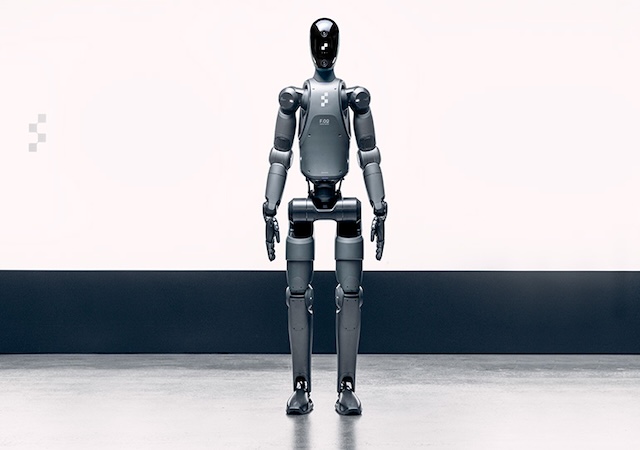November 5th, 2024
OpenAI
OpenAI has consistently pushed the boundaries of artificial intelligence research, and its latest innovation, O2, marks another milestone in this journey. Positioned as the successor to OpenAI’s GPT-4 and other prior models, O2 is an advanced system that aims to improve AI’s capacity for understanding, problem-solving, and interactive engagement with users. This article explores O2’s key features, potential applications, and the broader implications for AI development.
What is OpenAI’s O2?
O2, OpenAI’s anticipated next-generation AI model, represents a step forward in both computational power and functionality, driven by improvements in model architecture, data processing, and training methodology. The model is engineered to handle more complex tasks with enhanced reasoning, creativity, and interactive engagement across a broader range of topics and domains.
This development builds on OpenAI’s previous generative models, aiming to enhance both the model’s power and its safety protocols. O2 is designed to meet the growing demand for AI systems that can perform nuanced, high-stakes tasks—from drafting technical documents to providing real-time insights across industries.
Key Features of OpenAI’s O2
1. Enhanced Language Understanding and Generation: O2’s architecture is optimized to improve comprehension and generation capabilities, enabling the model to produce highly relevant, accurate responses. By refining its understanding of context and semantics, O2 can generate text that feels more coherent and human-like, even in complex discussions.
2. Real-Time and Multi-Modal Processing: One of O2’s defining features is its ability to process real-time inputs and outputs in multiple formats, including text, images, audio, and potentially video. This multi-modal capability allows O2 to engage with users across a wide variety of media, enabling it to assist in creative fields like design and video editing as well as traditional text-based tasks.
3. Improved Memory and Context Retention: O2 introduces a more sophisticated memory architecture that allows it to retain context over long interactions. This feature is essential for complex problem-solving and helps the model better understand evolving conversations. It also improves consistency in applications where long-term memory of prior interactions is beneficial.
4. Advanced Ethical and Safety Mechanisms: OpenAI has invested heavily in refining safety protocols for O2. This includes extensive testing and improvements in moderation features to prevent harmful outputs, protect user data, and reduce biases in the system’s responses. The model incorporates a series of filters and control mechanisms that allow for safer and more responsible AI usage.
5. Developer Flexibility and Integration: OpenAI designed O2 to be highly compatible with different development environments and APIs, allowing for greater customization. This flexibility benefits developers who wish to tailor O2’s outputs for industry-specific applications or who need specialized tools to leverage its functionality.
Potential Applications for O2
With its expanded capabilities, O2 is expected to be transformative across numerous industries:
• Healthcare: O2 could support medical research, diagnostics, and patient support by synthesizing medical literature, analyzing complex data sets, or assisting practitioners in interpreting clinical data.
• Education: The model can serve as a dynamic tutor, adapting to individual student needs, answering questions in real time, and facilitating interactive learning experiences in science, language, math, and other subjects.
• Content Creation and Media: With multi-modal capabilities, O2 can be used in journalism, marketing, and content production. It has the potential to generate high-quality written material, offer insights on visual media, and even assist with audio production.
• Finance: Financial institutions could use O2 to analyze trends, interpret financial data, and provide personalized insights to users. The model’s real-time processing capabilities make it a useful tool for evaluating market movements or assisting with investment research.
• Customer Service: O2’s improved context retention and real-time processing make it ideal for customer support applications, where understanding prior interactions and adapting to complex queries are essential.
Challenges and Considerations
While O2’s advancements are promising, implementing such powerful AI comes with its own set of challenges:
1. Data Privacy and Security: Given O2’s capability to handle sensitive information, privacy and data security concerns are paramount. Ensuring compliance with data protection regulations will be essential as the model integrates into high-stakes industries.
2. Bias and Ethical Concerns: Even with enhanced safety measures, biases within large language models remain a significant issue. OpenAI has worked to reduce biases in O2, but ongoing research is essential to mitigate unintended biases that could influence decision-making processes.
3. Resource-Intensive Infrastructure: Running O2 at full capacity requires substantial computational resources. This raises questions about the energy and environmental costs associated with its deployment, sparking interest in more sustainable AI solutions.
4. Regulatory Hurdles: Regulatory compliance in different jurisdictions may be challenging due to O2’s potential to impact fields like finance, healthcare, and law. OpenAI must ensure that O2 aligns with existing and evolving AI regulations to maintain public trust.
5. Accessibility: While O2 has groundbreaking potential, ensuring its accessibility to diverse user groups remains a challenge. OpenAI’s mission includes democratizing AI access, so they must balance scalability with affordability to make O2 widely available.
The Future of AI with OpenAI’s O2
O2 represents a substantial leap forward in the development of intelligent, reliable, and multi-functional AI systems. Its potential to contribute to scientific research, drive productivity, and improve educational outcomes aligns with OpenAI’s mission of creating beneficial and accessible AI for all.
However, as with any powerful technology, responsible and ethical deployment will determine O2’s legacy. Its success will depend not only on its technical capabilities but also on OpenAI’s commitment to transparency, regulatory compliance, and ongoing improvements in safety.
OpenAI’s O2 marks an exciting step into the future of AI, setting new standards for what intelligent systems can achieve and how they can be responsibly integrated into society. The advancements in O2 bring AI closer to being a trusted, versatile tool across fields, paving the way for innovations that could redefine productivity, connectivity, and human potential.